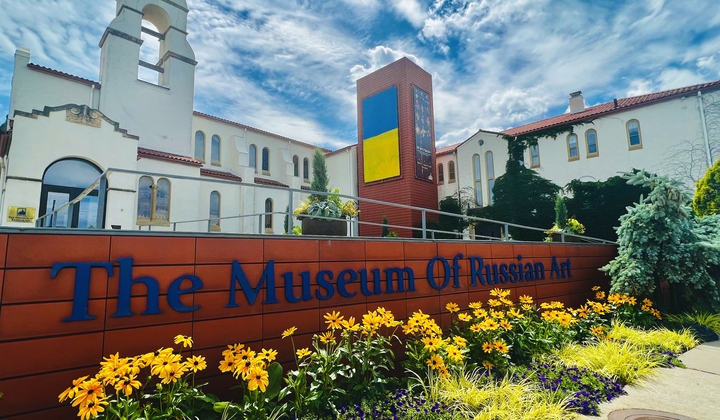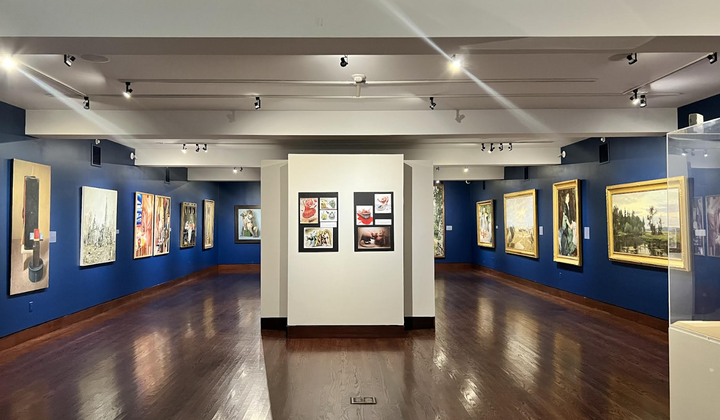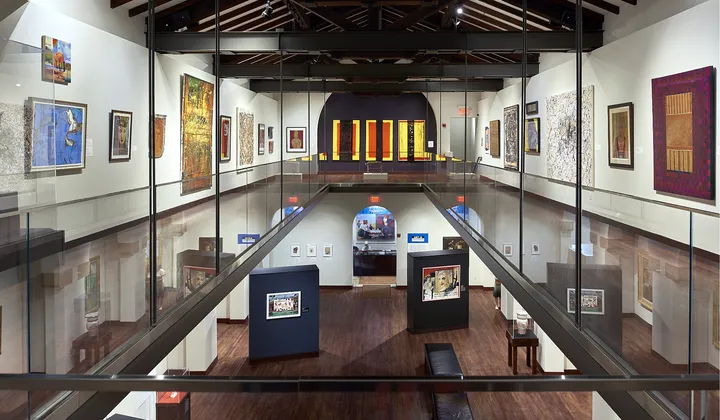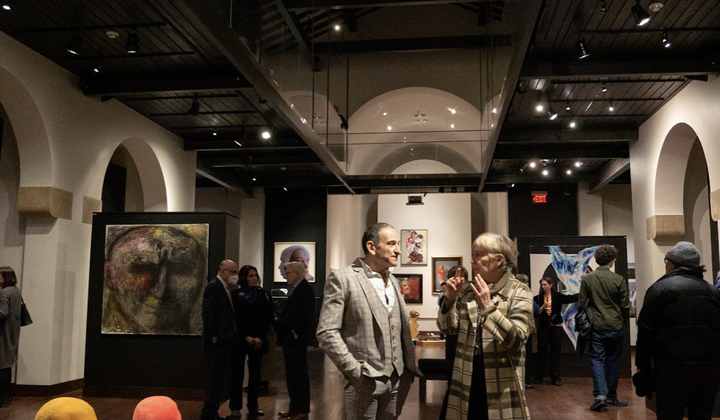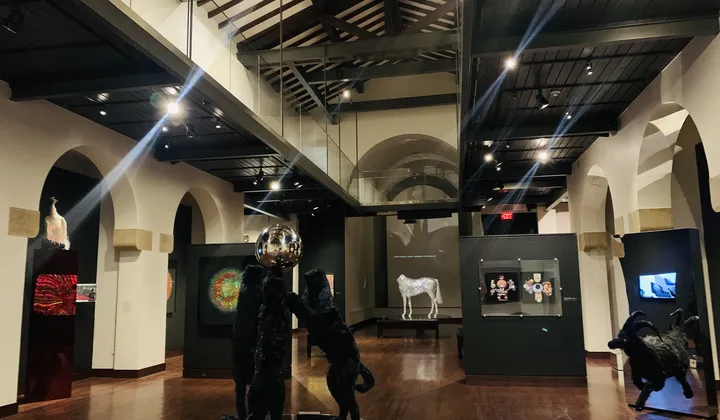The Museum of Russian Art
5500 Stevens Avenue, Minneapolis, MN 55419 - United States
The Museum of Russian Art (TMORA) promotes understanding of the art, people, and culture of Muscovite Russia, the Russian Empire, and the former republics of the Soviet Union through outstanding exhibitions, cultural presentations, and educational programs serving the people of Minnesota and the nation. In fulfillment of its mission, TMORA exhibits and collects art from Armenia, Azerbaijan, Belarus, Estonia, Georgia, Kazakhstan, Kyrgyzstan, Latvia, Lithuania, Moldova, Russia, Tajikistan, Turkmenistan, Ukraine, and Uzbekistan. Additionally, the Museum exhibits and collects the work of émigré artists from those countries, with a special emphasis on artists living in Minnesota.
The Museum has become part of Minnesota’s rich cultural fabric and a source of visual, experiential knowledge about the vast and often troubled region that was the Russian Empire and the Soviet Union, now existing as fifteen independent countries. TMORA also presents the opportunity to learn more about the diverse cultures of our fellow Minnesotans, immigrants from the region — some arriving recently to escape the perils of Putin’s regime.
TMORA presents eight or more exhibitions each year, with items from its permanent collection of over 7,000 works and with art from major collections in the U.S. and abroad. The Museum enhances its exhibitions by presenting subject specific lectures, seminars, concerts, and other unique events, which include independent scholars who share their expertise with the TMORA audience. Housed in a beautifully renovated historic building, the Museum’s multi-level galleries provide a tranquil and intimate setting for its dynamic array of exhibitions and programs.
Exhibits
TMORA: 20 YEARS
August 27, 2022 - FEBRUARY 20, 2023
On view in the Main and Mezzanine Galleries
The Museum of Russian Art (TMORA) marks its 20th anniversary with a special exhibition showcasing the Museum’s diverse and rich collections. The exhibition unfolds TMORA’s story, in an attempt to thank all those who contributed to the Museum’s successful emergence, survival and growth, despite economic crises, pandemics, and wars. The Museum has become part of Minnesota’s rich cultural fabric and a source of visual, experiential knowledge about the vast and often troubled region that was the Russian Empire and the Soviet Union, now existing as fifteen independent countries. TMORA also presents the opportunity to learn more about the diverse cultures of our fellow Minnesotans, immigrants from the region — some arriving recently to escape the perils of Putin’s regime.
The exhibition will feature TMORA’s permanent collection including religious icons, paintings, Soviet-era posters and artifacts, peasant crafts, samovars, toys, and other works from the collection. One of the key pieces will be the first painting donated to TMORA in 2002 by the Johnson family. A special section will be devoted to curiosities that the Museum has accumulated in recent years, such as a brick of tea presented to Nicholas II, when he was still an heir to the Russian throne and a prince traveling in China, a collection of Imperial-era beer bottles, a peasant hand woven floor rug with solar symbolism, and more. TMORA expresses its profound gratitude to all the donors who contributed to the Museum’s remarkable collections.
CAPTURING THE PRISTINE: MINNESOTA ARTIST PETER USTIMCHUK
August 27, 2022 - January 15, 2023
On view in the Fireside Gallery
Peter Ustimchuk paints landscapes of Minnesota finding inspiration in his admiration and love for the pristine nature of our northern state. Born in Rivne, Ukraine in 1967, Ustimchuk grew up in a large hard-working family of eight brothers and one sister. In his teenage years, he studied at a Hermitage-affiliated art studio in his native city. In 1985–87, he was drafted into the Soviet Army and served as a designer for the Trans-Baikal military area in eastern Siberia. Released from the service, Ustimchuk applied to the Lviv Art Institute but was rejected because he was not a member of the Komsomol (Young Communist League).
Peter Ustimchuk emigrated to the US in 1989. He owns a construction company in central Minnesota and puts his heart and soul into his work and his art.
SAY NO TO WAR: POLITICAL CARTOONS BY UKRAINIAN AND RUSSIAN ARTISTS
On view in the Lower Gallery
April 20, 2022 - End of the War
TMORA has launched the second round of the Say No to War exhibition of political cartoons by Ukrainian and oppositional Russian artists. The Museum will continue to rotate the display, reiterating its antiwar stance, until the end of this war. We will be adding new artist names, expanding our geographic reach, and introducing new artworks until the unjust and brutal war ends. In this 2nd round of the exhibition, the new names include Serhii Fedko, Dmitry Skazhenik, Oleh Smal, Vadim Siminoga, and Leonid Storozhuk, all from Ukraine, as well as new cartoons by artists represented in the 1st round. These Ukrainian artists live through the unthinkable realities of wartime; and we, as a museum, together with the whole world, say, “Freedom and Victory to Ukraine!”
The exhibition is organized by The Museum of Russian Art (TMORA) in collaboration with Minnesota artist Andrey Feldshteyn, who has worked in the genre of political cartoons for four decades. At the beginning of the war, Andrey approached a number of artists with an invitation to share their works for this exhibition and they sent their amazing works to be displayed at TMORA.
Andrey writes, “Wars destroy human relationships. But political cartoonists inhabit a country of their own governed by the law of the genre. We collaborate in international projects, express our anti-war sentiment during war-time, and support colleagues who suffer persecution. At the beginning of this war, I wanted to attract artists to a collaborative project exposing the aggressor, pointing to the perpetrator, and uniting artists against our common enemy, Putin’s regime waging a war of aggression in Ukraine.
PERMANENT COLLECTION GALLERY
On view in the Lower Gallery
This exhibition presents a sampling of TMORA’s permanent collection of art from the 15 countries formed from the former Soviet Union. Mounting this exhibition, TMORA expresses a profound gratitude to art donors who contributed to the Museum’s ever-growing collection. Over the last twenty years, more than a hundred people donated their artworks and cultural artifacts to the Museum, generously sharing their art with the broad public.
Founded in 2002 by the prominent art collectors Raymond and Susan Johnson, TMORA is one of the few American museums collecting art from Muscovite Russia, the Russian Empire, and the former republics of the Soviet Union. When the Museum moved to its present location in 2005, TMORA’s collection was comprised of a mere dozen Soviet-era oil paintings. In 2021, the collection numbered more than seven thousand pieces of diverse treasures from this region: paintings, sculpture, icons, drawings, posters, New Year ornaments, coins, medals, postage stamps, nesting dolls, folk clay toys, porcelain, samovars, and more.
A highlight of the collection is a group of 111 paintings from Ukraine in the official art style of the Soviet era, Socialist Realism. The collection also includes outstanding examples of non-conformist art from the 1960s-1980s, produced by the artistic underground. The Museum owns an extensive collection of folk art, such as Russian nesting dolls and traditional clay toys, as well as unique sets of fascinating cultural artifacts of the Soviet era, such as New Year ornaments, medals and coins. The Museum’s Soviet-era posters are unique historical documents, striking for their graphic imagery.
The Permanent Collection Gallery will rotate works of art from the Museum’s holdings every year. A special feature of the exhibition is the recent acquisitions section, which will renew every month to present the most recent donations to TMORA’s Collection.
Participation in Museum Day is open to any tax-exempt or governmental museum or cultural venue on a voluntary basis. Smithsonian magazine encourages museum visitation, but is not responsible for and does not endorse the content of the participating museums and cultural venues, and does not subsidize museums that participate.


